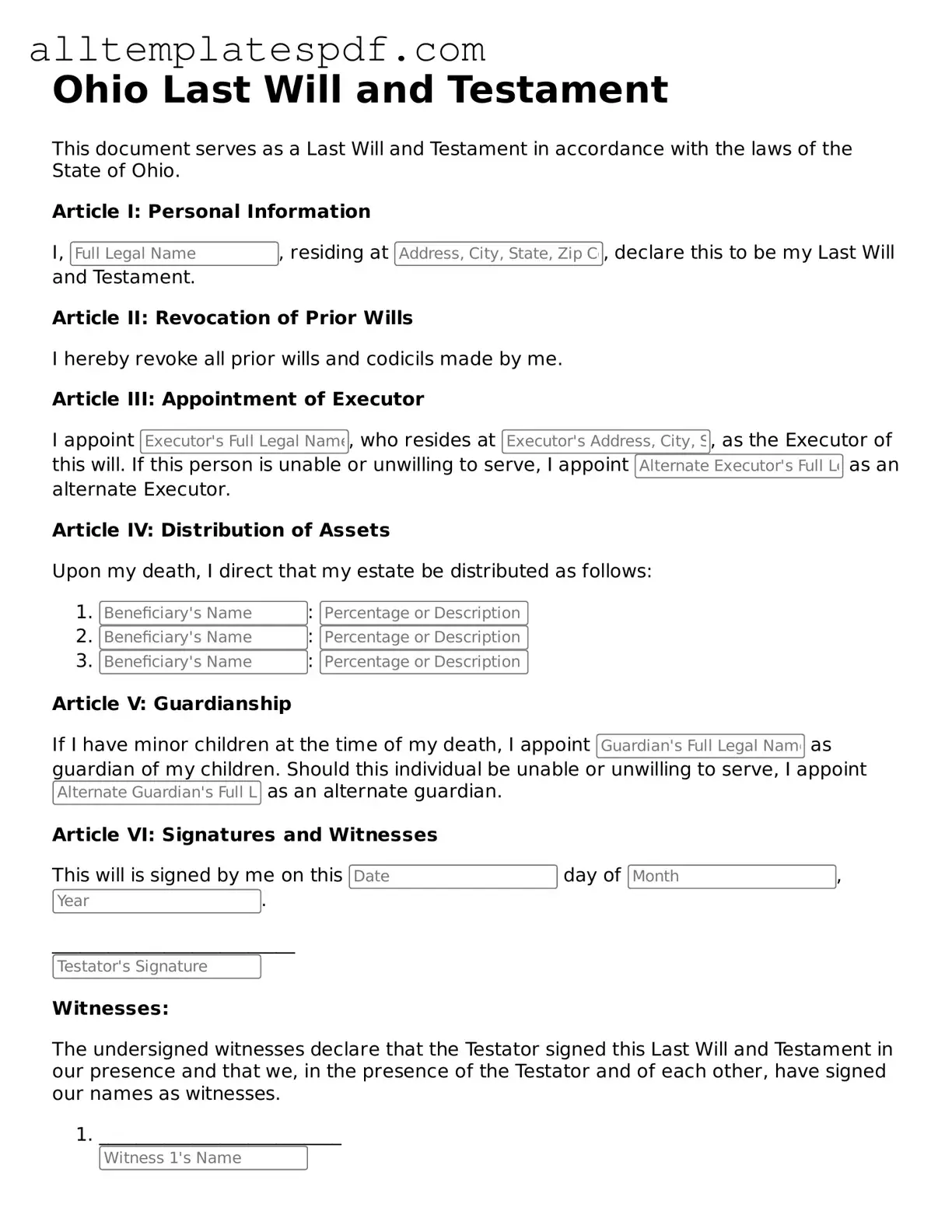When individuals prepare their Last Will and Testament in Ohio, they often overlook important details that can lead to complications later. One common mistake is failing to properly identify the beneficiaries. It's crucial to clearly state who will inherit your assets. Vague language or incomplete names can create confusion and disputes among family members.
Another frequent error is neglecting to update the will after major life events. Births, deaths, marriages, and divorces can significantly alter one's intentions regarding asset distribution. If the will isn't revised to reflect these changes, it may not accurately convey the testator's wishes.
People also often forget to appoint an executor. The executor is responsible for managing the estate and ensuring that the will is executed according to the testator’s wishes. Without a designated executor, the probate court may need to appoint someone, which can lead to delays and additional costs.
Additionally, many individuals do not sign their will in the presence of witnesses. Ohio law requires that a will be signed by the testator and at least two witnesses. If this requirement is not met, the will may be deemed invalid, leaving the estate to be distributed according to state law rather than the deceased's wishes.
Another mistake is failing to consider the implications of digital assets. In today’s digital age, many people have online accounts, cryptocurrencies, and other digital properties. Not addressing these assets in the will can lead to difficulties in accessing and distributing them after death.
Some people also neglect to discuss their wishes with family members. Open communication can prevent misunderstandings and disputes among heirs. If family members are unaware of the testator's intentions, it may lead to conflict during an already difficult time.
Lastly, individuals sometimes forget to store their will in a safe and accessible place. A will that cannot be found after the testator's death can create significant delays in the probate process. It is essential to inform trusted family members or the executor about the location of the will to ensure it can be easily located when needed.
